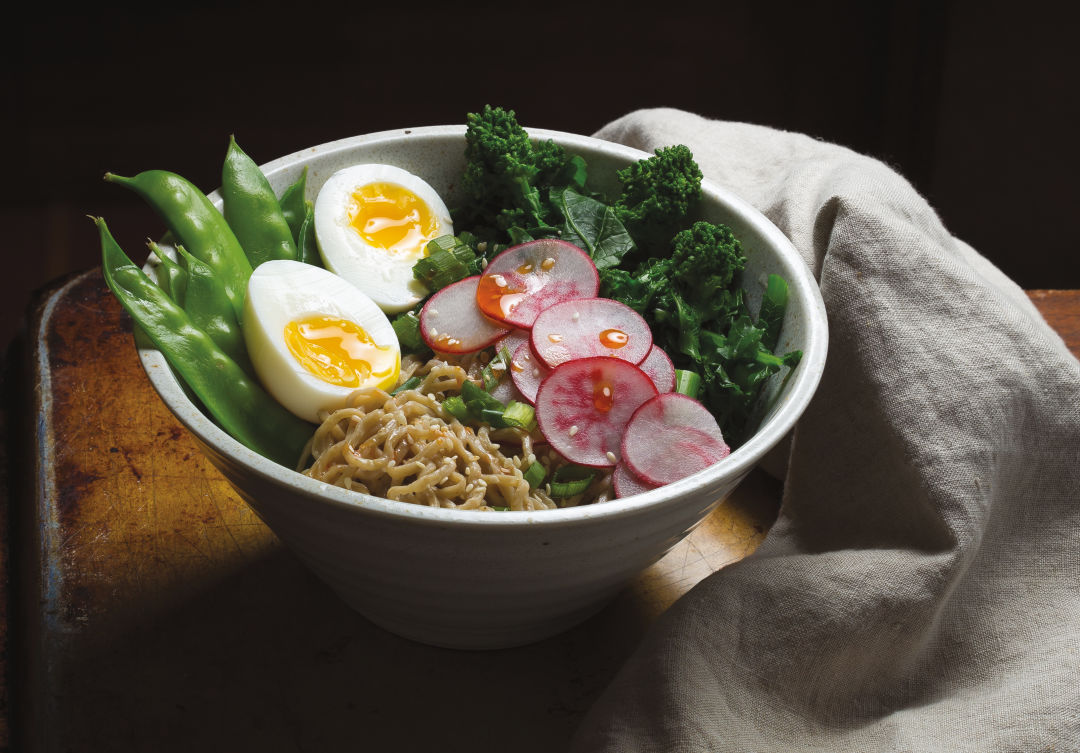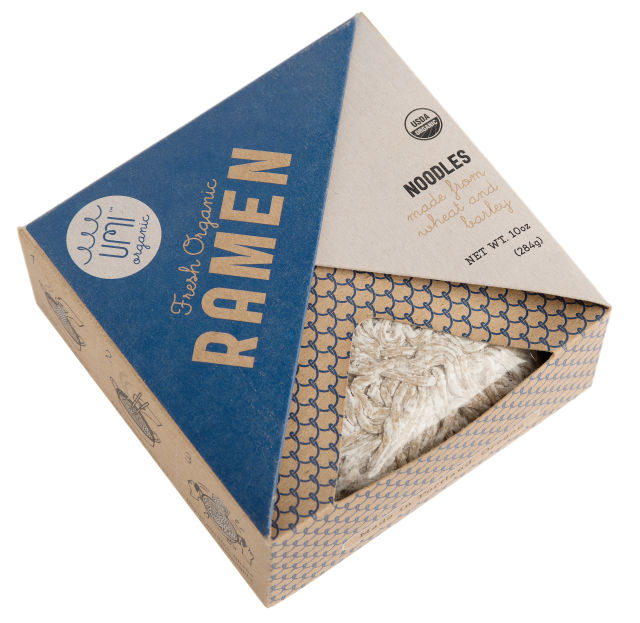A Portlander Makes the Country's First Fresh, Organic Ramen Noodle

Use Umi Noodles for this warm-weather ramen recipe.
Image: Michael Novak
Making ramen noodles from scratch takes chutzpah. Most bigwigs, from Ivan Ramen to Momofuku, use industrial-scale specialists, like lauded Sun Noodles from Oahu. Not Lola Milholland, an admitted Japanophile and one of the masterminds behind the country’s first fresh, organic ramen noodle.
The 32-year-old brought Umi Noodles to the Hollywood Farmers Market in 2016, furiously boiling batches and slicking them in Thai or Filipino sauces or launching them down bamboo “noodle luges” for passersby. Just months later, Umi Noodles were in nearly every New Seasons market in the city and starring in local bowls at Milk Glass Mrkt and Saucebox. Later this year, Milholland plans to stock high-end grocers in Seattle with her signature origami boxes, complete with sauce packets—dan dan Sichuan to tare broth.

Find Umi in nearly every New Seasons market in the city.
Image: Courtesy Umi Noodles
What makes Umi special? Apart from having the giddy bounce and tenacious chew you’d expect from a top-shelf ramen, the noodles have a nutty, sweet quality owed to Willamette Valley–milled barley flour. This warm-weather ramen recipe—a favorite of Milholland’s known as hiyashi chuka—uses fresh, spicy, bitter spring vegetables and cool, creamy, ginger-garlic-flecked miso sauce to match the hearty noodles. A day-brightening ramen bowl made exclusively from Oregon-proud ingredients? It’s only a farmers market trip away.
For more recipe ideas and grocery locations, visit umiorganic.com
Miso Sesame Noodles
2 servings
- Miso Sesame Sauce*
- 2 eggs
- 1 bunch broccoli rabe, ends trimmed and cut into 1½-inch pieces
- ½ cup snow or snap peas, strings removed
- 1 package (10 oz) Umi noodles
- 6 medium radishes, sliced thin and tossed with ½ tsp salt and 1 tsp rice vinegar
- 1 tsp sesame oil
- 2 scallions, chopped
- 1 tbsp toasted sesame seeds
- Flake salt, to taste
- Chile oil to taste
Cook the eggs, rabe, and peas Bring a large pot of water to a rapid boil. Fill a large bowl with ice water. Add eggs to boiling water and cook for 5 minutes. Add rabe and peas and cook together for 2 more minutes. Using tongs and a slotted spoon, scoop everything from pot into the ice water. (Keep the pot at a rapid boil for the noodles.) Once cooled, remove eggs, rabe, and peas from ice water and drain in a colander. Peel eggs and slice in half.
Cook the noodles Gently fluff noodles, add to water, and boil 2–2½ minutes, stirring often. Drain, rinse with cold water until cool, and shake out excess water.
Combine Add noodles to sauce and toss well. Top with rabe, peas, eggs, radishes, sesame oil, sesame seeds, scallions, a pinch of flake salt, and chile oil to taste.
*Miso Sesame Sauce
In a medium bowl, whisk 1½ tbsp tahini, 1½ tbsp toasted sesame oil, 1½ tbsp white (shiro) miso, 1 tbsp soy sauce, 1 tbsp rice vinegar, 1 tbsp sugar, 1-inch piece fresh ginger, peeled and minced, and 2 cloves garlic, minced. Slowly whisk in 2–3 tbsp water until the sauce reaches a smooth, pourable consistency. Sauce keeps for 3 weeks in the refrigerator.




